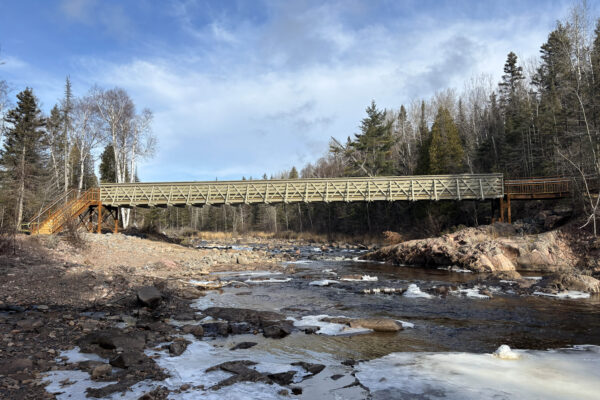Northern lights shine bright over Minnesota and beyond, with more displays possible tonight
Individuals in Cook County and across a large swath of the U.S. enjoyed the vibrant colors of northern lights on Tuesday night.
The colorful display occurred after a geomagnetic storm that released coronal mass ejections (CMEs) from the sun over the past several days. Following the northern lights display on Tuesday night, the National Weather Service announced that a G4 severe storm level was reached at 8:20 p.m. EST.
A G4 storm level is a significant disturbance in the Earth’s magnetic field, bringing varying intensity between lower levels and severe storm conditions over the course of the event, according to NWS officials. The severity of the solar storm can increase the likelihood of anomalies or adverse effects on satellite operations and GPS capabilities.
WTIP’s Chuck Olsen captured the northern lights on Tuesday evening and shared the image on Facebook.
Chik-Wauk Museum and Nature Center, located towards the end of the Gunflint Trail shared a time lapse video of the AllSky Camera displaying the northern lights during Tuesday evening into early morning Wednesday.
The solar storm produced streaks of green, pink, and purple that illuminated skies across Minnesota and the Midwest, reaching as far south as Colorado, Nebraska, and beyond.
Late Tuesday night, areas as far away as Nashville, Tenn., reported visible northern lights. The NWS in Nashville shared a photo on X showing vivid pink and purple hues of the northern lights.
😍 AURORA ALERT 😍
Aurora Borealis are visible at NWS Nashville! Sky conditions should remain clear for great viewing in middle Tennessee tonight, so get out and enjoy it! 🌙
For more info on space weather: https://t.co/XQppi160N9 #TNwx #MiddleTNwx pic.twitter.com/CQJFHRXVtN
— NWS Nashville (@NWSNashville) November 12, 2025
The sun is at the maximum phase of its 11-year activity cycle, making the light displays more widespread. National Weather Service meteorologists and space experts expect opportunities to view the northern lights to continue on Wednesday night as the solar storm progresses.

NOAA Aurora Forecast for Wednesday, Nov. 12 | NOAA graphic
Last year, the strongest geomagnetic storm in two decades slammed Earth, producing light displays across the Northern Hemisphere. And soon afterward, a powerful solar storm dazzled skygazers far from the Arctic Circle when dancing lights appeared in unexpected places, including Germany, the United Kingdom, New England, and New York City.
The sun’s active spurt is expected to last at least through the end of this year, though when solar activity will peak won’t be known until months after the fact, according to NASA and NOAA.
Northern lights forecasts can be found on NOAA’s Space Weather Prediction Center website or an aurora forecasting app.
Share your aurora photos with WTIP by emailing sydney@wtip.org or message WTIP on Facebook.














